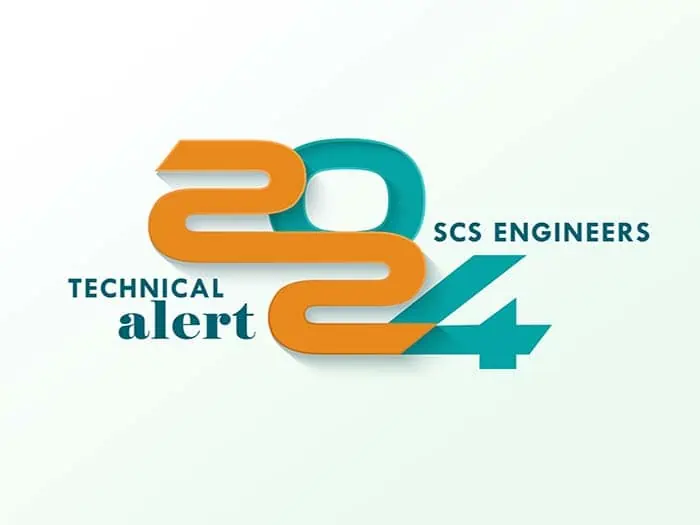


EPA has released a new test method to measure volatile, nonpolar fluorinated compounds, such as PFAS, in air emissions, including compounds that are products of incomplete combustion or incomplete destruction, a method that the EPA feels could help implement its pending update to EPA’s PFAS destruction and disposal guidance.
Last week EPA posted the draft test method, known as Other Test Method 50 (OTM-50): Sampling and Analysis of Volatile Fluorinated Compounds from Stationary Sources Using Passivated Stainless-Steel Canisters.
While the agency has not officially promulgated the draft method, it says it is releasing the method to promote consistency with what it believes is the current best practices to sample and analyze the target volatile fluorinated compounds (VFCs) from stationary sources.
At The Science of PFAS conference in Raleigh, NC, EPA Assistant Administrator for Research and Development Chris Frey noted EPA’s public release of the method during a speech, but the guide remains in interagency review at the Office of Management & Budget (OMB).
The method could be useful in measuring PFAS in many products of incomplete combustion and destruction (PICs/PIDs) in incinerator emissions — a method EPA is likely considering in its updated disposal/destruction guidance.
Its release is also significant because the agency struggled to develop methods to detect and measure the chemicals in ambient air that could eventually serve as the basis for new rules, especially for policies governing incineration and combustion.
Frey noted in his speech the importance of monitoring for products of incomplete combustion, saying OTM-50 allows for the monitoring of multiple analytes, offering “an important step forward for improving our understanding of PFAS destruction.”
Stephen Jackson, an EPA chemical safety researcher, discussed OTM-50 at the same conference, noting it is intended to test for nonpolar, volatile chemicals — among which the agency believes there are many PICs/PIDs because the bond between the polar functional group and the nonpolar fluorinated chain is typically the weakest bond, and therefore the easiest to break. When that bond breaks, a nonpolar volatile fluorocarbon chain can potentially persist, be transported into air and can re-oxidize, he said.
Volatile Fluorinated Compounds and EMC Publication
EPA notes in the document that its posting of OTM-50 on its Air Emission Measurement Center (EMC) website that the EPA has not endorsed the validity of the test method or garnered regulatory approval, but EMC staff have reviewed it and found it potentially useful to the emission measurement community. This method is being released as an OTM by EMC to promote consistency with what EMC believes is the current best practices to sample and analyze the VFCs targets from stationary sources.
The new method references 30 target compounds, and is not a PFAS-specific method. In the FAQ document, EPA notes OTM-50 is intended to measure a variety of volatile fluorinated compounds (VFCs), including PICs/PIDs as well as industrial compounds of interest. These groups are not mutually exclusive and many of the current 30 target compounds fall into both categories.
The test method document further notes OTM-50 as a performance-based method that is “applicable to the collection and quantitative analysis of specific VFCs. It then describes collecting and analyzing gas samples from stationary sources for the purpose of determining the concentration of 30 target VFCs, including hexafluoropropene oxide (HFPO), 1H-perfluorohexane and trifluoromethane (HFC-23), among others.
In the OTM-50 document, EPA aims to provide consistency in measuring air emissions and fill the gap of missing validated stationary source measurements for use by the facilities, stationary source test teams, research laboratories, and other stakeholders to measure a common list of VFCs emitted from vents and stacks.
Sampling Technique and Training
In the document’s summary of the method, EPA notes, OTM-50 collection methods and training for field sampling and recovery staff. The method requires measurements of water and CO2 in conjunction with stack or duct volumetric flows to prevent interference with the VFC compounds being sampled from stationary combustion sources and maintain consistent data quality criteria.
The document includes a table of Quality Control (QC) parameters and performance specifications, QC procedures, and ongoing QC requirements. The document describes QC parameters, required frequency, and performance criteria to satisfy method objectives. The OTM-50 document also includes detection and quantitative reporting limits the agency was able to achieve on the instrument under lab conditions.
Furthermore, EPA does not envision combining the OTM-50 and the OTM-45 sampling trains, even as most applications or studies such as those related to incinerators will be interested in the full PFAS scope. OTM-45 measures approximately 50 semi-volatile PFAS and polar PFAS in air emissions.
EPA’s FAQ document states that combining the two trains is not something EPA would envision as the separate methods, although possible to run simultaneously and independently is possible, the technical incompatibilities appear minor.
See the full press release at InsideEPA.com (requires subscription).
Released OTM-50 Materials: